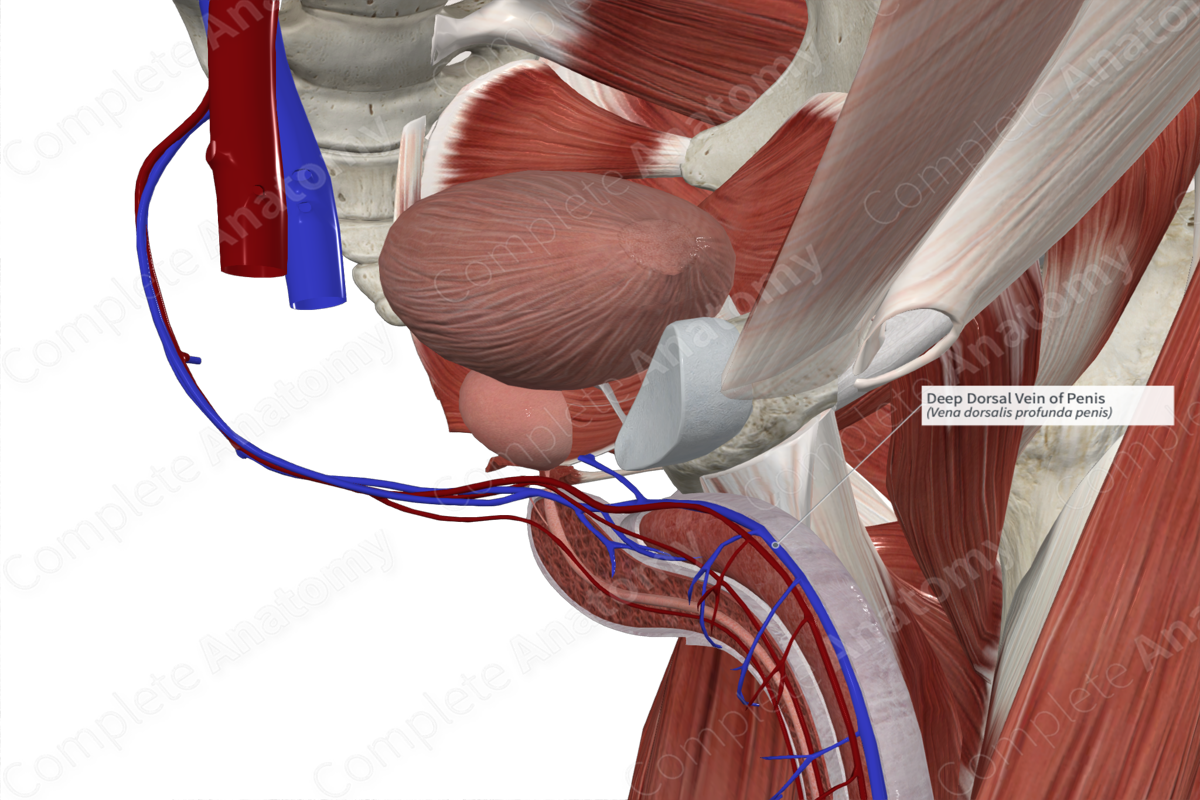
Quick Facts
Origin: Glans penis and distal two thirds of penile shaft.
Course: Travels unpaired along the dorsal midline deep to the superficial penile fascia. Passes inferior to the public symphysis and terminates in the prostatic plexus.
Tributaries: Receives input from circumflex and emissary veins via a capillary plexus.
Drainage: Glans penis, corpus spongiosa, and corpora cavernosa.
Origin
The deep dorsal vein of the penis is formed by a collection of circumflex veins, which pass around the circumference of the penile shaft, with 3-10 joining the deep dorsal vein along its distal two thirds.
Course
The deep dorsal vein of the penis travels on the dorsal aspect of the shaft of the penis deep to the superficial (Colle’s) and deep (Buck’s) penile fascia. It lies in the dorsal midline groove between the paired corpora cavernosa. Eventually the vein passes inferior to the pubic symphysis at the level of the suspensory ligament of the penis. It terminates by draining into the prostatic plexus.
Engorgement of the erectile tissue bodies of the penis compresses venous outflow, including circumflex and emissary veins and venous plexuses. This blocks blood return (veno-occlusive mechanism) leading to accumulation of blood and penile erection.
Tributaries
The deep dorsal vein of the penis receives circumflex veins directly and emissary Veins via a subtunical capillary plexus.
Structures Drained
The deep dorsal vein of the penis drains the glans penis and the distal two thirds of the corpus spongiosum and corpora cavernosa erectile tissue bodies.




